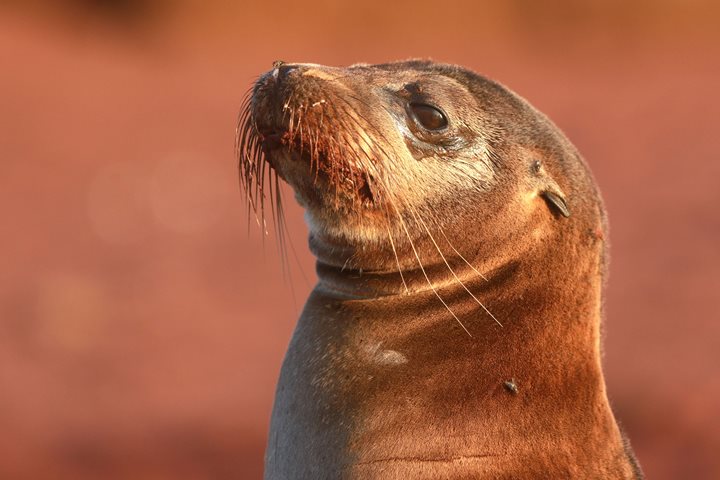Today, our destinations are two centric island that hold unique ecologies and species that cannot be found anywhere else in the world. South Plaza and Santa Fe Islands. They both hold their unique (or endemic) species of land iguana. These islands have also different environments and much more wildlife.
- Daily Expedition Reports
- 08 Dec 2016
South Plaza & Santa Fe Islands, 12/8/2016, National Geographic Islander
- Aboard the National Geographic Islander
- Galápagos
Celso Montalvo, Naturalist/Certified Photo Instructor
Celso was born in Guayaquil, Ecuador. At the age of nine he arrived in the Galápagos for the first time and he was profoundly touched by nature, observation, and isolation. When he saw the sharks, rays and turtles swimming in the bay, he was trigger...
Read MoreShare Report
Related Reports
11/23/2022
Read
National Geographic Islander II
Isabela and Fernandina
Our day began with the chance to point out a lot of interesting geological features as we enjoyed Zodiac tours along a massive flank of Ecuador Volcano on Punta Vicente Roca. In the afternoon, we took a sunny walk on Punta Espinoza on Fernandina Island. We spotted many iguanas, and a bunch of sea lions hanging around, too.
11/22/2022
Read
National Geographic Islander II
North Seymour & Rabida Islands
Relatively small and low compared to neighboring Santa Cruz, North Seymour is located to the north of Baltra. The island is dry with predominantly low shrubs, like prickly pear cacti. The incense trees are bare during the dry season. Seabirds like frigatebirds and blue-footed boobies nest on the island, and sea lions rest on the sand when they are not fishing. Land and marine iguanas also live here. Rabida is in the middle of the archipelago and has a striking red sand beach. We observed a small colony of sea lions of all ages resting or nursing. Behind the beach, American flamingos nest in a brackish lagoon. This island is full of contrasts and wildlife that we enjoyed observing during this day of expedition.







